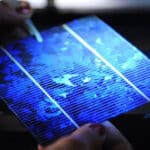
Photovoltaic efficiency is the ratio of the electric power produced by a photovoltaic solar cell to the amount of solar irradiance on the device. Photovoltaic solar cells are solid state devices made from various types of semiconductor materials that convert the sun’s light energy directly into electrical energy. Their current-voltage (I-V) characteristics are a function of the light source, design their silicon based materials.
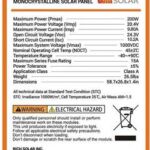
The rated power of a solar cell or photovoltaic panel is measured under internationally specified test conditions. The standard test conditions, or STC of a photovoltaic solar panel defines the manufacturer’s voltage, current and wattage rating. But since these conditions are not typical of how PV modules and arrays operate in the field, actual performance is somewhat less than at STC.
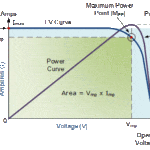
The electrical specifications and information provided on the label or nameplate of any photovoltaic panel relates to its performance under standard test conditions (STC). But the temperature coefficient of a solar panel determines its voltage characteristics as it is directly affected by its operating temperature, because as the panels temperature increases or decreases, so to does its terminal voltage for a given load condition

Bypass diodes are a must for any photovoltaic solar panel as they protect the panel from overheating when shaded by trees, leaves or debris. When one solar cell of a panel becomes shaded while the other solar cells around it are illuminated by sunlight, hot spots can be created leading to overheating and eventual destruction of the affected shaded cell. A bypass diode is commonly placed on sub-strings of the photovoltaic panel usually one diode per 15 to 20 photovoltaic cells to maintain the load current delivery of the panel
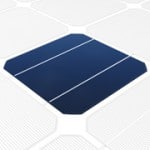
Solar cell I-V characteristics curves show the current and voltage characteristics of a particular photovoltaic cell, module or array in order to give a detailed description of its solar energy conversion ability and efficiency at different light intensities. Solar cell I-V characteristics curves are use to measure a cells open-circuit voltage, short-circuit current, fill factor and efficiency with the rating of a PV cell or panel depending on these parameters

Photovoltaic cells turn the photons from sunlight into electrons producing a current flow, thus photovoltaic PV cells are powered by incident sunlight and so are commonly called solar cells. Solar cells are made using silicon based semiconductor materials with different electrical properties. An n-type semiconductor material with excess negatively charged electrons is fused together with a p-type semiconductor which has an excess of positively charged holes to create a p-n junction. When a photon of light hits this p-n junction, electrons are release to form an electrical current
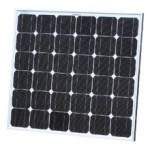
How many solar cells do I need for a solar photovoltaic panel to generate electricity is one of the main questions asked in many forums. Solar photovoltaic panels capture light from the sun and convert it to clean power but solar panels and modules are not one big piece of silicon, but instead are made by combining many smaller solar cells together. Conventional solar panels, either monocrystalline or polycrystalline panels use invidual solar cells electrically connected together to provide a panel with a rated output power. The amount of electricity generated annually by a photovoltaic panel will depend on a whole range of factors but the more solar cells you have the free electrical energy you can generate
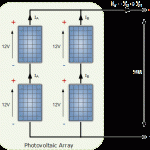
Photovoltaic arrays consist of interconnected solar panels to provide the desired power output. Solar array configurations include series connected panels, parallel connected panels or a combination of both. While the electrical output power, measured in watts (W), of a photovoltaic array is given by multiplying the arrays output voltage with its current for different interconnection configurations, the actual output power of photovoltaic array varies with the variation in solar insolation and operating temperature.

Photovoltaic panels are made up of individual solar cells connected together to produce the require panels output power. The power output of a photovoltaic solar cell is given in watts, and is equal to the product of voltage times the current with the average power output of a typical photovoltaic solar cell being around 2 watts, so to create a photovoltaic panel of 100 or 200 watts individual pv cells need to be connected together in a series and/or parallel combination to give any desired voltage, current and power output producing a photovoltaic panel.

Photovoltaic solar cells come in many different forms with the three main types of photovoltaic cell being Monocrystalline silicon, Polycrystalline silicon and Thin Film silicon. Crystalline silicon is the most common technology used to produce photovoltaic cells representing about 90% of the market today. The conversion efficiency for a monocrystalline cell ranges between 15 to 20% with polycrystalline lower between 10 to 14%. Thin film photovoltaics are produced by printing or spraying a thin semiconductor layer of photovoltaic material onto a glass, metal or plastic foil substrate making them cheap to manufacture.